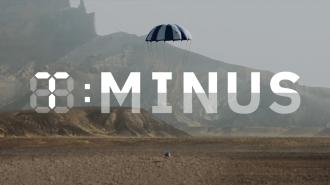This is T-Minus, where we count down the biggest developments in space, from new rocket launches to discoveries that advance our understanding of the universe and our place in it. Humanity is reaching new heights in space exploration. Make sure you’re part of the journey by subscribing here.
Russia’s nuclear space weapon?
Satellites are integral to civilian life and military defense, which makes them a potential prime target for enemy attacks, and on February 15, the US government revealed that Russia has “obtained” an anti-satellite weapon.
John Kirby, spokesperson for the White House National Security Council, declined to comment on whether it is a nuclear weapon, but three officials with knowledge on the matter, speaking on the condition of anonymity, told CNN that it is. Specifically, they say it is a “nuclear EMP weapon,” which would generate an electromagnetic pulse powerful enough to destroy satellites.
Regardless of the exact nature of the weapon, Kirby said Russia has not deployed it, and even if the nation used the weapon, its impact would be limited to space, where it would also harm Russia’s own satellites, as well as those of other nations.
“We are not talking about a weapon that can be used to attack human beings or cause physical destruction here on Earth,” said Kirby. “That said, we’ve been closely monitoring this Russian activity, and we will continue to take it very seriously.”
Water discovered on asteroids
On February 12, scientists from Southwest Research Institute in Texas reported the first discovery of water molecules on the surface of an asteroid — potentially revealing how water was delivered to Earth.
They made this discovery using data from the Stratospheric Observatory for Infrared Astronomy (SOFIA), a retired airborne observatory that collected data on the moon, asteroids, and more during more than 90 overnight flights.
“We detected a feature that is unambiguously attributed to molecular water on the asteroids Iris and Massalia,” said lead author Anicia Arredondo. “We based our research on the success of the team that found molecular water on the sunlit surface of the moon. We thought we could use SOFIA to find this spectral signature on other bodies.”
Now that they know asteroids can host water, the team has submitted a proposal to use the James Webb Space Telescope to look for it on more space rocks.
Finally: Return of the first space factory
Gravity is pretty helpful in manufacturing (imagine trying to make a car if parts kept floating off the assembly line), but some products would be easier to make without gravity in the mix — semiconductors, fiber optic cables, and certain drugs all fall into this category.
California startup Varda Space Industries is developing spacecraft to autonomously manufacture these products in orbit before returning them to Earth, and on June 12, 2023, it deployed the first of these “space factories” with the help of SpaceX.
The spacecraft successfully completed its mission (synthesize the HIV-AIDS drug ritonavir in microgravity) before the end of the month, but Varda couldn’t bring the space factory home until it secured permission from the FAA.
On February 14, it announced that it had finally gotten the green light, and one week later, the capsule landed at the Air Force’s Utah Test and Training Range, bringing the extended operation to an end — and signaling the start of the era of off-world manufacturing.
We’d love to hear from you! If you have a comment about this article or if you have a tip for a future Freethink story, please email us at tips@freethink.com.
